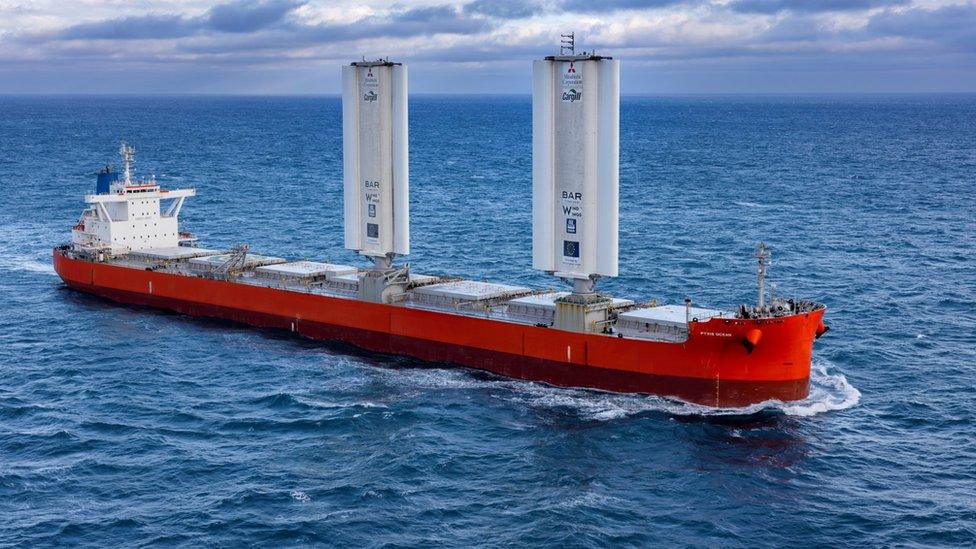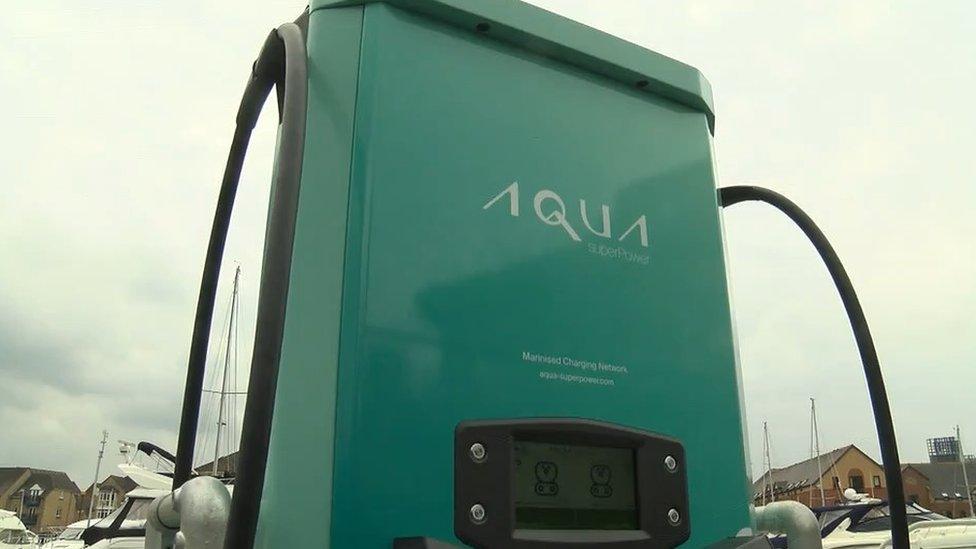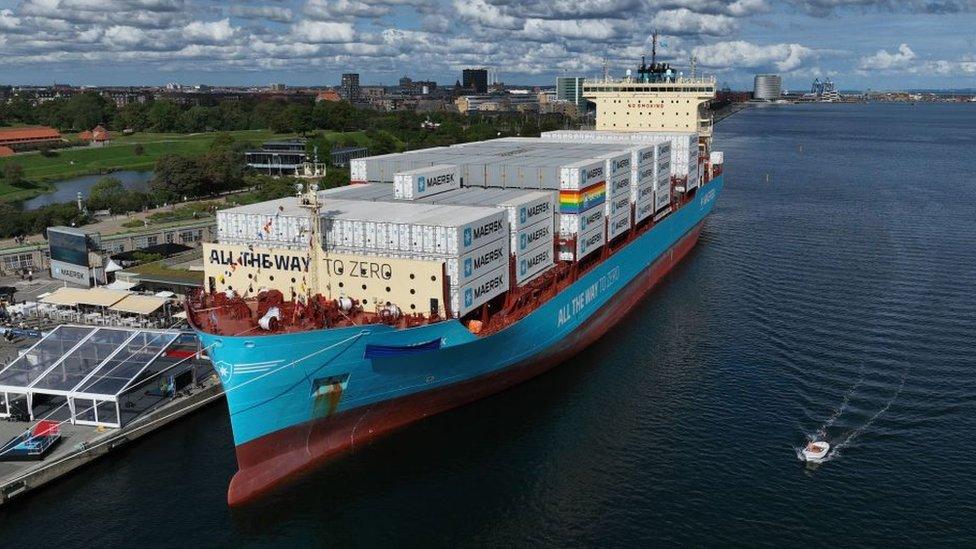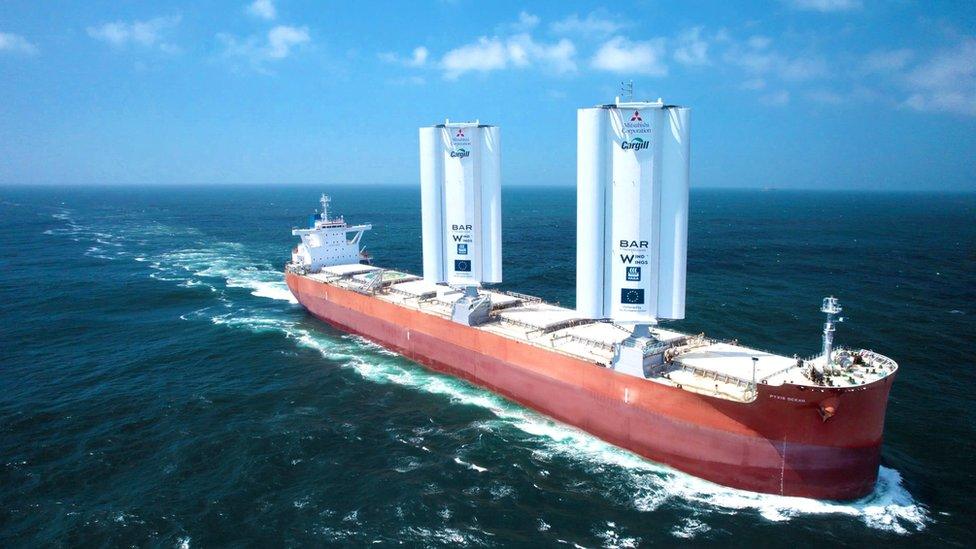Sail-powered cargo ship 'shows potential of wind'
- Published

The Pyxis Ocean in the English Channel
Retrofitting giant, rigid sails to a cargo ship has effectively cut its fuel use and carbon dioxide (CO2) emissions, shipping firm data shows.
The Pyxis Ocean tested the British-designed WindWings for six months.
Cargill says the data "underscores the potential" of wind to reduce the shipping industry's carbon footprint.
Experts describe the results as "very encouraging", but say, at present, only a tiny volume of the international shipping fleet is using the technology.
Sails have powered boats for millennia - but the type of sails trialled on the Pyxis Ocean are different to those normally seen on wind-powered vessels.
Made of the same material as wind turbine blades, they are folded down in port then opened out to stand at 123ft (37.5m) on the open seas.
After having the wings fitted in Shanghai, the ship set sail in August 2023.
Cargill says the ship spent half a year sailing the Indian and Pacific Oceans and the North and South Atlantic, during which time it used on average three tonnes less fuel each day.
That equates to "11.2 tonnes of C02 emissions saved, external" for each day the sails were up; if replicated over a year, it would amount to the equivalent of removing 480 cars from the roads, Cargill calculates.
Decarbonisation
The saving, though, is a drop in the ocean for the industry as a whole.
International shipping is estimated to be responsible for 837 million tonnes of CO2 annually - or 2.1% of total global emissions.
Nonetheless, Cargill says it is encouraged by the results.
"We believe technologies that harness the wind could be an important, cost-effective way to achieve our decarbonisation goals in the short, medium and long-term," said Jan Dieleman, president of Cargill's Ocean Transportation business.
The company says it is "engaging" with more than 250 ports worldwide to find ways for ships fitted with the sails to berth.
BAR Technologies, the UK firm which designed the wings, is seeking other ships to fit, and says it will use three wings rather than two in future, increasing the fuel and emissions saved.
Time for change
Stephen Gordon, managing director at the maritime data firm Clarksons Research, highlighted the fact that this trial had taken place with a refurbished, rather than a brand new ship.
"The option to retrofit to an existing fleet - as has been done with the Pyxis Ocean - is very helpful," he told the BBC.
"It will take decades to deliver all the new ships needed for the decarbonisation journey. Even today shipyards globally are full and lead times for delivery are averaging 3.5 years."
Mr Gordon said other firms were exploring alternative energy-saving technologies, such as flettner rotors - a system of spinning cylinders first conceived 100 years ago and now enjoying a limited renaissance, external.
But he stressed that the international shipping fleet and newbuild order-book stood at 114,000 vessels - and his company only had records of 100 of them having wind-assisted technology.
Dr Simon Bullock, from the University of Manchester's Tyndall Centre, said it was time for that that to change.
He said the results showed the "major and immediate benefits of wind-assist technologies" and urged other shipping companies to take note.
"To tackle climate change, the shipping industry needs to cut its use of fossil fuel rapidly.
"These essential technologies make major inroads into that challenge, and should be deployed and retrofitted as standard," he told the BBC.
Related topics
- Published27 January 2024

- Published18 December 2023

- Published21 August 2023
